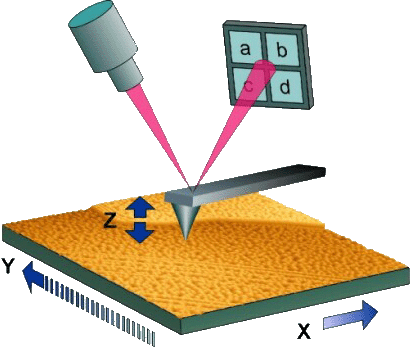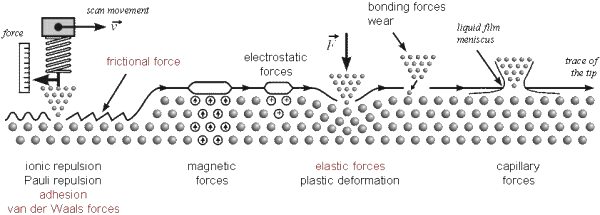 |
|
Principle of Atomic Force MicroscopyThe principle of atomic force microscopy (AFM) is rather simple and resembles that of a record player. A force microscope detects forces acting between a sample surface and a sharp tip which is mounted on a soft leaf spring, the so-called 'cantilever'. A feedback system, which controls the vertical z-position of the tip on the sample surface, keeps the deflection of the cantilever (and thus the force between tip and sample) constant. Moving the tip relative to the sample in the x-y-plane of the surface by means of piezoelectric drives, the actual z-position of the tip is recorded as a function of the lateral x-y-position with (ideally) sub-Ångström precision. The obtained three-dimensional data represent a map of equal forces, which can be determined absolutely using Hook's law. Finally, the data is analyzed and visualized through computer processing. 
The experimental set-up for the deflection detection measurement that is most frequently used is the beam deflection scheme sketched above. Bending and torsion of the cantilever are measured simultaneously by measuring the lateral and vertical deflection of a laser beam while the sample is scanned in the x-y-plane. With this setup, a wide variety of tip-sample interaction forces can be investigated locally and with high resolution, often down to the atomic scale if the corresponding interaction is sufficiently short-ranged; an overview is given in the figure below. 
|
|
